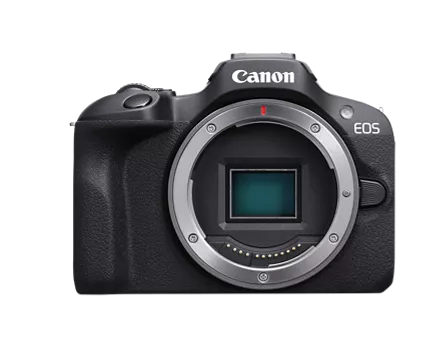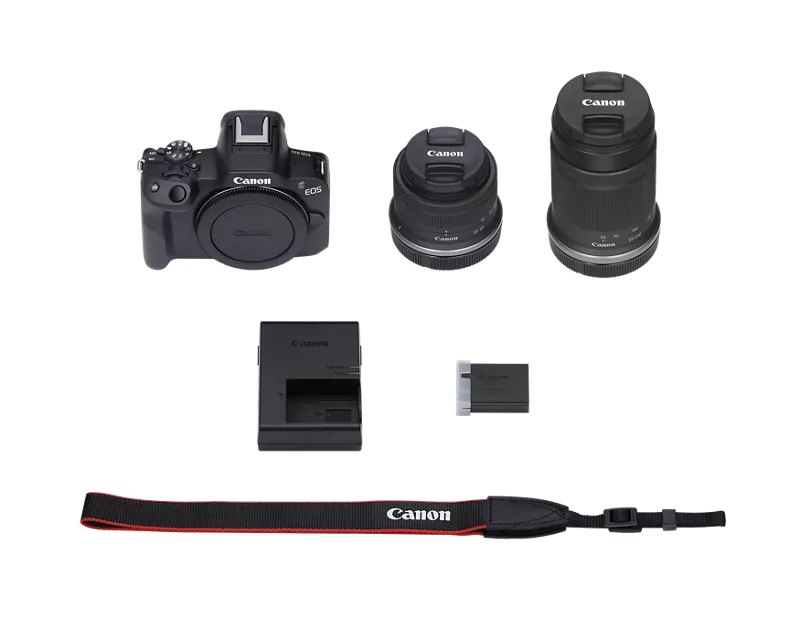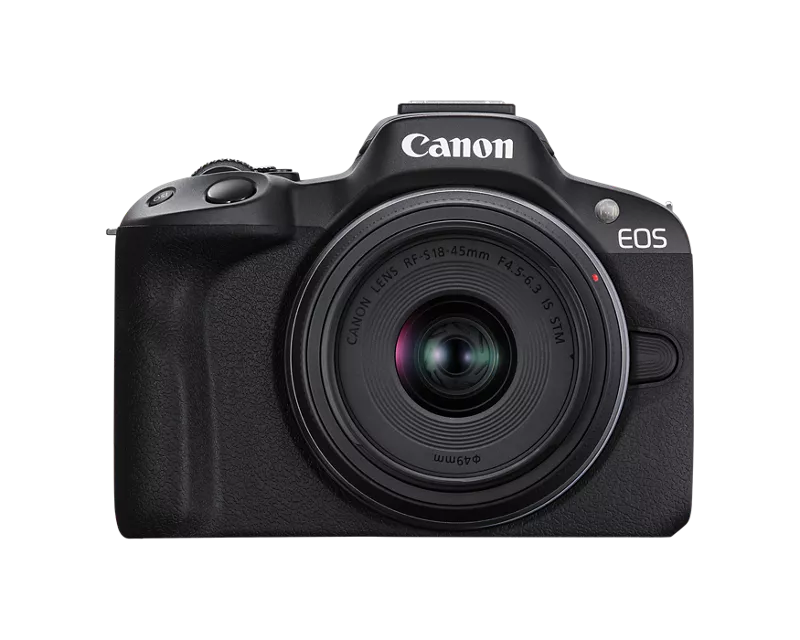- Canon Community
- Discussions & Help
- Camera
- EOS DSLR & Mirrorless Cameras
- Re: How do I set the focus to infinity?
- Subscribe to RSS Feed
- Mark Topic as New
- Mark Topic as Read
- Float this Topic for Current User
- Bookmark
- Subscribe
- Mute
- Printer Friendly Page
- Mark as New
- Bookmark
- Subscribe
- Mute
- Subscribe to RSS Feed
- Permalink
- Report Inappropriate Content
07-19-2024
10:02 PM
- last edited on
07-23-2024
09:44 AM
by
Danny
I am a very new “photographer” using an EOS R100. Today I tried to take pictures of the night sky, but my camera was out of focus. I tried setting the camera to the manual focus mode in the menu, but I still didn’t know how to actually focus the camera. After doing hours of research and many many tears, I am turning to you guys to answer my probably stupid question. How do I focus my camera?
Camera: EOS R100
Lens: RF-S18-45mm F4.5-6.3 IS STM
Solved! Go to Solution.
Accepted Solutions
- Mark as New
- Bookmark
- Subscribe
- Mute
- Subscribe to RSS Feed
- Permalink
- Report Inappropriate Content
07-20-2024 04:42 AM - edited 07-20-2024 06:07 AM
Hi and welcome to the forum:
When using autofocus, the camera needs something to focus on that has defined shape and contrast - and the universe is not that. So, you need to change the focus to manual and set the focus lens control ring to work as a manual focus ring. Then you can see the focus change in the viewfinder.
Some cameras and lenses have a MF-AF (Manual focus - Auto focus) switch, but neither the lens nor the body have these. You need to go through the menu system to configure this.
I suggest a couple of things to help you out.
1. You need to switch from the basic light menu display to the much more detailed black one, that is how you access the controls you need.
When you turn the camera on, move the Mode Dial from A+ to Av. That will change the camera display to show you a lot more menus and settings. Now the camera manual should make a lot more sense.
Press the Menu button
Then on the first tab (Red camera shape) Page 5 (use the Left and right arrows on the back of the camera to move left or right. There you can see two settings that need to be configured:
Lens MF to Manual should be set to manual
Control Ring should be set to Focus
Press SET /OK in the centre of the rear dial area to return to shooting mode.
At that point you should be able to focus the lens manually. To do so you rotate the knurled ring at the very front of the lens (furthest from the body) left or right. I suggest that you try this in good daylight on something that has a well-defined shape and texture, like a building. You will get to see then which way your lens is set up to focus to objects in the distance.
To use the camera to focus on stars, you will set the camera to focus towards infinity - distance marking may show up in your viewfinder. Obviously, the night sky is very dark and this is where you will have to do some more learning about how to take images when it is very dark. I suggest browsing through some of the tutorials on the following list:
using the R100 to photograph the night sky - YouTube
Learning to use a dedicated camera is a steep learning curve after using something like a cell phone. You need to get a basic understanding of how a camera measures light (Metering) and controls the camera through the three exposure controls: Aperture, Shutter and ISO to get an acceptable exposure. This is not going to be super fast, and starting with night photography is not recommended for beginners because it uses extreme exposure values. It is better to learn the basics in daylight with subjects like scenery and people.
For additional information see:
Step 1: See 157 of the RF100 manual - here is the link: c015.pdf (start.canon) Make sure you have first extended the lens to allow you to use the lens - this is outlined on P 156.
Step 2:You can download a PDF of the lens manual from this link: see P7 for details: this manual link: rfs18-45f45-63isstm-im2-eng.pdf (c-wss.com)
Does this help?
I recommend that you watch a tutorial on the R100 system, this one is comprehensive.
Canon EOS R100 Camera Settings, Tips & Tutorial - YouTube there are inevitable promos to go through but it's free.
Alternatively:
Canon EOS R100 User's Guide (youtube.com)
I hope this helps
cheers, TREVOR
The mark of good photographer is less what they hold in their hand, it's more what they hold in their head;
"All the variety, all the charm, all the beauty of life is made up of light and shadow", Leo Tolstoy;
"Skill in photography is acquired by practice and not by purchase" Percy W. Harris
- Mark as New
- Bookmark
- Subscribe
- Mute
- Subscribe to RSS Feed
- Permalink
- Report Inappropriate Content
07-20-2024 10:28 AM
Hello, and welcome to the Canon forums.
Trevor gave some very good advice above on finding infinity focus. He reached out to me, knowing that I do quite a bit of night sky photography, and asked if I could offer you any help. I can't add anything as far as the focus since he covered it all, but let's talk about your settings.
First of all, what mode do you shoot the night skies in? What were YOUR camera settings for aperture, shutter speed, and ISO? Anything else you can tell me could be helpful.
Let me give you some basics on my personal settings. You may already know these things, but I'll rattle them off anyway in case anyone else that reads this is wondering.
I start off on Manual mode. Make sure any lens IS settings are turned off since you will be using a tripod. I know your camera body does not have IBIS, but if it did, you would want that off as well.
ISO - 1600 is a good starting point. If you have dark enough skies, 3200 might be better. I'll usually start at 1600 and as the night gets darker jump up to 3200. However I use faster lenses (F/2). With your lens you might try starting at 3200, then increase if you need to.
Aperture - as wide open as the lens can go. More light is better. On your lens if you are at 18mm then you want the aperture at F/4.5
Shutter speed - this is where you want to do most of your adjustments, and leave ISO and aperture as they are. I'll go anywhere from 2 seconds if I am shooting something bright like the Northern Lights, and up to 30 seconds if there are only a few stars on a moonless night. Do a test shot, and adjust from there. Keep doing that as the night goes on.
Tripod - make sure it is sturdy and does not vibrate easily. This is more important for night sky work due to the long exposures. A slight vibration will make stars look like they are out of focus.
Set your timer to a 2 second delay. This will dampen any vibrations you get from touching the shutter.
Those are good starting points, but I know there may be more questions. I can't guess which ones you might have (there are many depending on what you already know, or don't know) so feel free to ask anything.
Gary
Lake Michigan Area MI
Digital Cameras: Canon EOS R6 Mk ll, EOS R8, EOS RP, ...and a few other brands
Film Cameras: Mostly Pentax, Kodak, and Zenit... and still heavily used
- Mark as New
- Bookmark
- Subscribe
- Mute
- Subscribe to RSS Feed
- Permalink
- Report Inappropriate Content
07-20-2024 04:42 AM - edited 07-20-2024 06:07 AM
Hi and welcome to the forum:
When using autofocus, the camera needs something to focus on that has defined shape and contrast - and the universe is not that. So, you need to change the focus to manual and set the focus lens control ring to work as a manual focus ring. Then you can see the focus change in the viewfinder.
Some cameras and lenses have a MF-AF (Manual focus - Auto focus) switch, but neither the lens nor the body have these. You need to go through the menu system to configure this.
I suggest a couple of things to help you out.
1. You need to switch from the basic light menu display to the much more detailed black one, that is how you access the controls you need.
When you turn the camera on, move the Mode Dial from A+ to Av. That will change the camera display to show you a lot more menus and settings. Now the camera manual should make a lot more sense.
Press the Menu button
Then on the first tab (Red camera shape) Page 5 (use the Left and right arrows on the back of the camera to move left or right. There you can see two settings that need to be configured:
Lens MF to Manual should be set to manual
Control Ring should be set to Focus
Press SET /OK in the centre of the rear dial area to return to shooting mode.
At that point you should be able to focus the lens manually. To do so you rotate the knurled ring at the very front of the lens (furthest from the body) left or right. I suggest that you try this in good daylight on something that has a well-defined shape and texture, like a building. You will get to see then which way your lens is set up to focus to objects in the distance.
To use the camera to focus on stars, you will set the camera to focus towards infinity - distance marking may show up in your viewfinder. Obviously, the night sky is very dark and this is where you will have to do some more learning about how to take images when it is very dark. I suggest browsing through some of the tutorials on the following list:
using the R100 to photograph the night sky - YouTube
Learning to use a dedicated camera is a steep learning curve after using something like a cell phone. You need to get a basic understanding of how a camera measures light (Metering) and controls the camera through the three exposure controls: Aperture, Shutter and ISO to get an acceptable exposure. This is not going to be super fast, and starting with night photography is not recommended for beginners because it uses extreme exposure values. It is better to learn the basics in daylight with subjects like scenery and people.
For additional information see:
Step 1: See 157 of the RF100 manual - here is the link: c015.pdf (start.canon) Make sure you have first extended the lens to allow you to use the lens - this is outlined on P 156.
Step 2:You can download a PDF of the lens manual from this link: see P7 for details: this manual link: rfs18-45f45-63isstm-im2-eng.pdf (c-wss.com)
Does this help?
I recommend that you watch a tutorial on the R100 system, this one is comprehensive.
Canon EOS R100 Camera Settings, Tips & Tutorial - YouTube there are inevitable promos to go through but it's free.
Alternatively:
Canon EOS R100 User's Guide (youtube.com)
I hope this helps
cheers, TREVOR
The mark of good photographer is less what they hold in their hand, it's more what they hold in their head;
"All the variety, all the charm, all the beauty of life is made up of light and shadow", Leo Tolstoy;
"Skill in photography is acquired by practice and not by purchase" Percy W. Harris
- Mark as New
- Bookmark
- Subscribe
- Mute
- Subscribe to RSS Feed
- Permalink
- Report Inappropriate Content
07-20-2024 10:28 AM
Hello, and welcome to the Canon forums.
Trevor gave some very good advice above on finding infinity focus. He reached out to me, knowing that I do quite a bit of night sky photography, and asked if I could offer you any help. I can't add anything as far as the focus since he covered it all, but let's talk about your settings.
First of all, what mode do you shoot the night skies in? What were YOUR camera settings for aperture, shutter speed, and ISO? Anything else you can tell me could be helpful.
Let me give you some basics on my personal settings. You may already know these things, but I'll rattle them off anyway in case anyone else that reads this is wondering.
I start off on Manual mode. Make sure any lens IS settings are turned off since you will be using a tripod. I know your camera body does not have IBIS, but if it did, you would want that off as well.
ISO - 1600 is a good starting point. If you have dark enough skies, 3200 might be better. I'll usually start at 1600 and as the night gets darker jump up to 3200. However I use faster lenses (F/2). With your lens you might try starting at 3200, then increase if you need to.
Aperture - as wide open as the lens can go. More light is better. On your lens if you are at 18mm then you want the aperture at F/4.5
Shutter speed - this is where you want to do most of your adjustments, and leave ISO and aperture as they are. I'll go anywhere from 2 seconds if I am shooting something bright like the Northern Lights, and up to 30 seconds if there are only a few stars on a moonless night. Do a test shot, and adjust from there. Keep doing that as the night goes on.
Tripod - make sure it is sturdy and does not vibrate easily. This is more important for night sky work due to the long exposures. A slight vibration will make stars look like they are out of focus.
Set your timer to a 2 second delay. This will dampen any vibrations you get from touching the shutter.
Those are good starting points, but I know there may be more questions. I can't guess which ones you might have (there are many depending on what you already know, or don't know) so feel free to ask anything.
Gary
Lake Michigan Area MI
Digital Cameras: Canon EOS R6 Mk ll, EOS R8, EOS RP, ...and a few other brands
Film Cameras: Mostly Pentax, Kodak, and Zenit... and still heavily used
- Mark as New
- Bookmark
- Subscribe
- Mute
- Subscribe to RSS Feed
- Permalink
- Report Inappropriate Content
07-20-2024 01:03 PM
"How do I focus my camera?"
Actually quite simple. Everything is so far away, once anything in the night sky is in focus everything is in focus. The Moon for instance which is easy then simply put a small piece of tape on the focus ring or rubber band to hold it.
Also a bright star will work.
EOS 1D, EOS 1D MK IIn, EOS 1D MK III, EOS 1Ds MK III, EOS 1D MK IV and EOS 1DX and many lenses.
- Mark as New
- Bookmark
- Subscribe
- Mute
- Subscribe to RSS Feed
- Permalink
- Report Inappropriate Content
07-20-2024 06:01 PM
Adding: a solid tripod is essential for taking delayed (bulb) or zoom photos to eliminate shaking.
Canon EOS T7; EF-S 18-55mm IS; EF 28-135mm IS; EF 75-300mm; Sigma 150-600mm DG
12/18/2025: New firmware updates are available.
12/15/2025: New firmware update available for EOS C50 - Version 1.0.1.1
11/20/2025: New firmware updates are available.
EOS R5 Mark II - Version 1.2.0
PowerShot G7 X Mark III - Version 1.4.0
PowerShot SX740 HS - Version 1.0.2
10/21/2025: Service Notice: To Users of the Compact Digital Camera PowerShot V1
10/15/2025: New firmware updates are available.
Speedlite EL-5 - Version 1.2.0
Speedlite EL-1 - Version 1.1.0
Speedlite Transmitter ST-E10 - Version 1.2.0
07/28/2025: Notice of Free Repair Service for the Mirrorless Camera EOS R50 (Black)
7/17/2025: New firmware updates are available.
05/21/2025: New firmware update available for EOS C500 Mark II - Version 1.1.5.1
02/20/2025: New firmware updates are available.
RF70-200mm F2.8 L IS USM Z - Version 1.0.6
RF24-105mm F2.8 L IS USM Z - Version 1.0.9
RF100-300mm F2.8 L IS USM - Version 1.0.8
- EOS 5D Mark III - freezing up with pixelation on the back view screen. in EOS DSLR & Mirrorless Cameras
- EF 70-300 ii IS USM with EOS 1000F in EF & RF Lenses
- R5 Mkii & R1 - Is there a programmable button to turn off auto focus/turn on manual focus in EOS DSLR & Mirrorless Cameras
- problems with eos r100 camera zoom and auto focus are not working. in EOS DSLR & Mirrorless Cameras
- Any Canon EOS-RP to Celestron C90 adapter(s)? in Camera Accessories
Canon U.S.A Inc. All Rights Reserved. Reproduction in whole or part without permission is prohibited.







